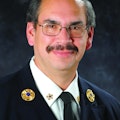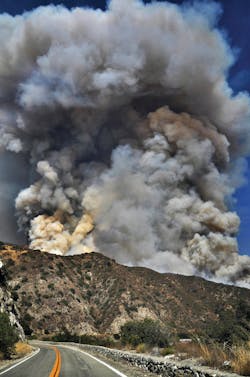A few months ago, the FDNY 18th Battalion commander, Battalion Chief John J. Salka Jr., retired after 33 years on the job. A Firehouse® Magazine contributing editor for many years and a speaker at Firehouse conferences, John writes a monthly column that graces the back page every month. The author of two books, John now teaches around the country on leadership and company officer training. He also writes a sometimes-controversial blog for Firehouse.com.
I recently visited FDNY Lieutenant Mike Wilbur, who was working his last tour in Ladder 27 in the Bronx, nicknamed the “Cross Bronx Express” because of its location alongside one of the nation’s busiest highways. For the previous several months, Mike was working on a project to ensure that every FDNY rig, if practical, was retrofitted with seatbelts large enough to be worn over firefighter turnout gear. The multimillion-dollar seatbelt retrofit program is designed to save lives. And the adoption of a modified, non-emergency-response program to certain types of alarms has brought an 80% drop in FDNY vehicle accidents citywide.
Years ago, both John and Mike approached me and asked to speak at Firehouse Expo. I said if they would each write for us six times a year, I would make sure we included them on the conference program. Both of their first articles soon appeared in Firehouse®. John’s first hands-on classes were about getting out alive. He pointed out to his audiences that while maintenance workers at hotels and swimming pools carry portable radios, but in many places the fire service could not afford to purchase these absolutely necessary communications devices. Wilbur discussed in great detail the consequences of bad things happening during emergency vehicle responses. One of his telling comments cautioned audiences that if you are out of control and reckless while operating an emergency vehicle, “You might as well just bring your checkbook to the trial. It will cost you big time.” The Apparatus Architect series of articles written in conjunction with Tom Shand has educated potential buyers of fire apparatus to the ins and outs of making a large financial purchase and outlines all the varied details needed for apparatus to be efficient, safe and practical. In the 1970s, I heard one firefighter say to another after an alarm was received, “Where are we going? It doesn’t matter, just go fast and make a lot of noise; the public thinks you are doing your job.” YOU CAN’T DO THAT TODAY. I had Mike come to my fire department when I was fire chief to present multi-part driver training. The training ended with a practical driving exam.
Both of these students and masters of the fire service have learned how to teach others and share information gleaned over decades with the ultimate goal of making our firefighters safer. Along with them are such veteran fire officers and chiefs as John Norman (whose book on strategy and tactics was just published in its fourth edition), Vincent Dunn, Jim Smith and Mike Dugan and many others from around the country, all of whom have retired from active duty, still use and share all of their years of practical hands-on experience to educate others. It is not that they are any more special than other firefighters from around the country, but they have worked in areas that allowed them to gather invaluable experience day after day and gained their niches for writing and speaking. One of the people here said I was born in “the era of fire.” Others who came after were born in the era of hazmat. Today, most are born in the era of EMS. Even if we don’t do it every day, we have to train and prepare.
In many parts of the country, the wildland fire season has been open for business for many months, much earlier than usual. Some people comment that it is wildland season year round in some areas. As of Sept. 10, 2012, year to date, 45,777 large wildland fires have burned 8,180,660 acres across the country. The acreage burned is the second most in the past 10 years. The 10-year average was 58,496 fires and 6,313,059 acres burned. Today, there are 34 active large fires burning in California, Idaho, Montana, Nevada, Oklahoma, Oregon, Washington and Wyoming.
On the 11th anniversary of 9/11, the powers to be seem to be ready to include many types of cancers for the first responders and those who lived and worked in the area. Nine more FDNY members were added to the 55 who already had passed away from illnesses due to working at the World Trade Center site. Many new TV programs highlighted events from that day. It is really a shame that many of the blunders before, during and after the attacks are now being released. An even bigger national tragedy.
For comments and suggestions, please contact us at [email protected].
TO BECOME AN ORGAN DONOR, SEE www.organdonor.gov & CHECK YOUR STATE’S REGULATIONS
56
2012 firefighter line-of-duty deaths at press time
1,410
2012 residential fire fatalities at press time
About the Author

Harvey Eisner
Editor Emeritus
HARVEY EISNER was named Editor Emeritus of Firehouse® after serving 15 years as Firehouse's Editor-in-Chief. He joined the Tenafly, NJ, Fire Department in 1975 and served as chief of department for 12 years. He was a firefighter in the Stillwater, OK, Fire Department for three years while attending Oklahoma State University. Eisner was an honorary assistant chief of the FDNY and program director for the Firehouse Expo, Firehouse World and Firehouse Central conferences. He covered many major fires and disasters and interviewed numerous fire service leaders for Firehouse®
